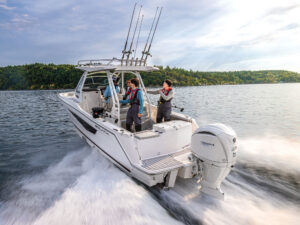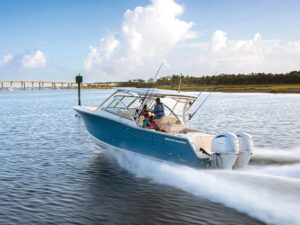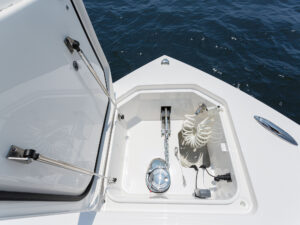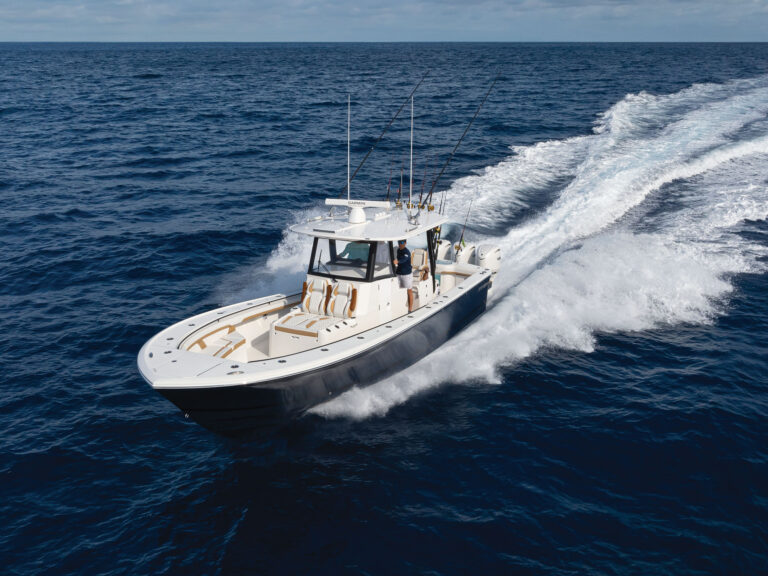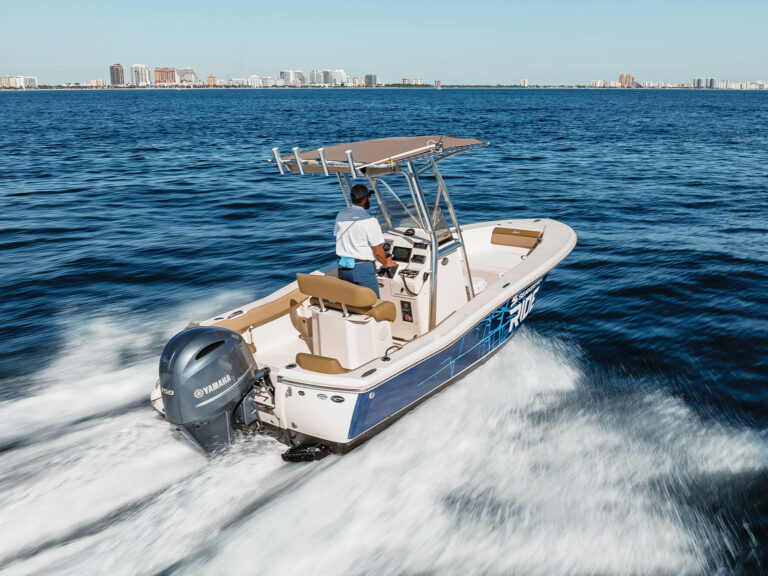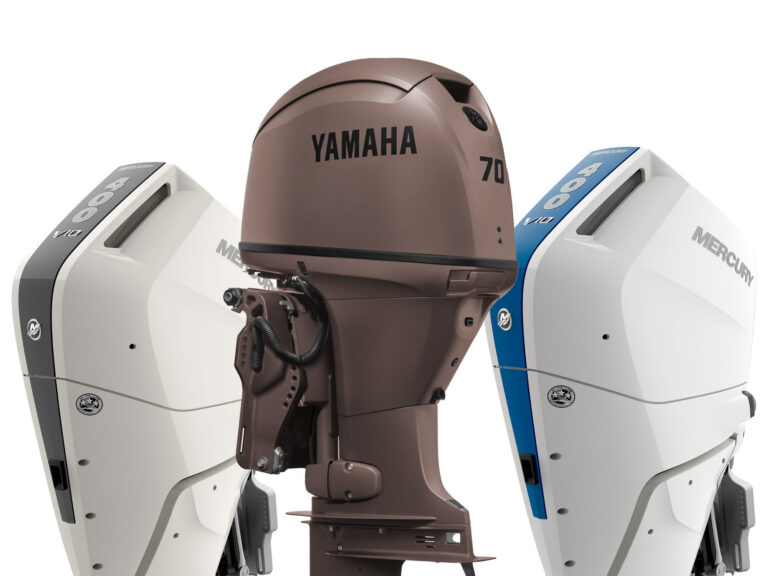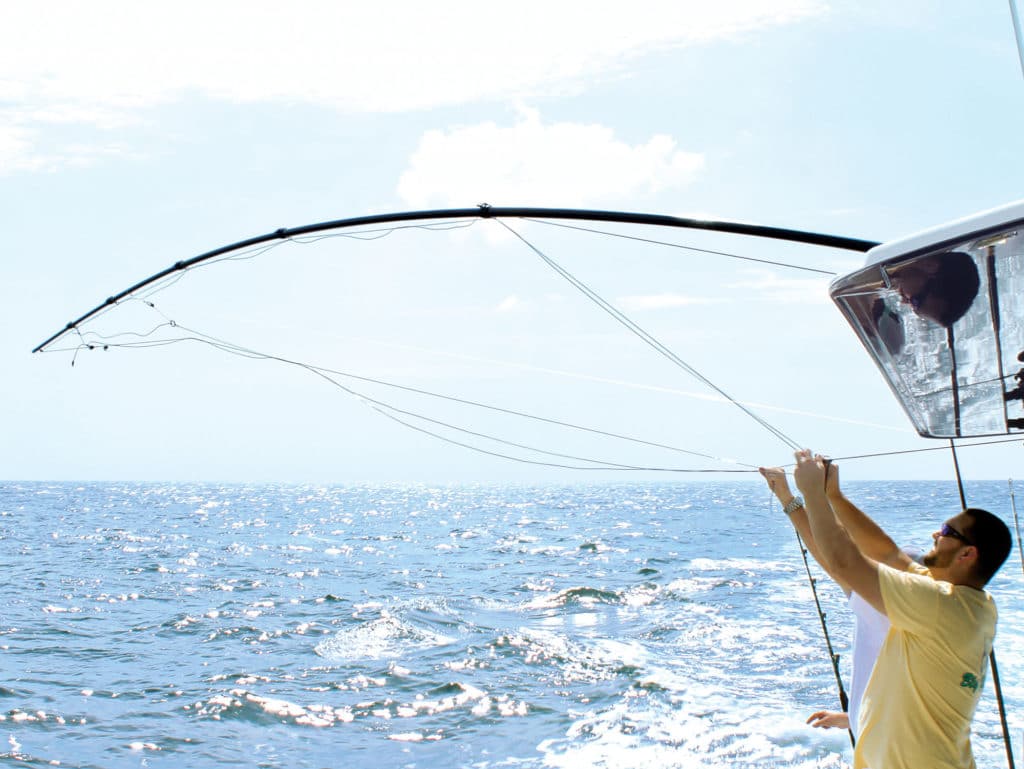
SPREAD OUT
A 40-plus-foot sport-fisher trolling a spread along a weed line without outriggers, complete with supporting struts and multiple lanyards, was once unthinkable. But what was an oddity 40 years ago became standard when shorter, simpler riggers hit the market with designs suited for even small center consoles and walkarounds.
Zane Grey and other early innovators realized the advantages of spreading the baits to cover more water while pulling them outside the prop wash where they can be seen by fish more easily. Of course, outriggers steadily improved as new materials were developed and anglers fine-tuned the designs, incorporating features that now allow crews to troll a variety of baits, lures, teasers and combinations more effectively.
PONDER THE POSSIBILITIES
“The ability to get the baits, teasers and heavy dredges out farther where the fish can see them in clear water is critical, especially with outboard prop wash,” says Matt Bridgewater, chairman of Gem Products, a leading manufacturer of outriggers. “Outriggers also enable the anglers to see the fish, so the hookup ratios go up. Pulling dredges and pitch-baiting have proven to be a -winning tournament -formula, and on outboard boats, it’s a game changer if your riggers can handle that -added torque.”
FACTORS TO CONSIDER
There are several factors to consider when selecting outriggers for a new boat or for retrofitting an older one. While swing-out, gunwale-mount -models are still available for those looking for simplicity and lower cost, most setups nowadays are installed on hardtops, says Darin Asher with Rupp Marine, which builds outriggers for boats from 20 to 100 feet. Rupp makes Top Gun outriggers, the first design that could be deployed from the helm without having to climb up on the covering boards to extend the poles and set up the rigging.
“Most of the bigger center consoles are being ordered with fiberglass hardtops with integrated bases and -standard bolt patterns for outriggers,” he explains. “But not every top is -created equal. Different coring materials are used, and some are thicker than others, requiring longer vertical bases. Does the boat have an upper station or are you planning to add one eventually? Do you want welded or bolt-on bases; Fixed-length poles or telescoping? These are all questions to ask beforehand. For starters though, outriggers need to be user-friendly and strong.”
Bridge and boat slip clearances are additional considerations for fixed-length poles, although radius elbows and the ability of some outriggers to lie nearly flat on the hardtops have minimized such problems to a large degree. Telescoping poles also have parts that could be problematic if not maintained.
OUTRIGGER OPTIONS
Whether ordering outriggers for your new boat or buying a pair to retrofit an older craft, the choices of design, material and length are often limited by boat type and size, and your budget.
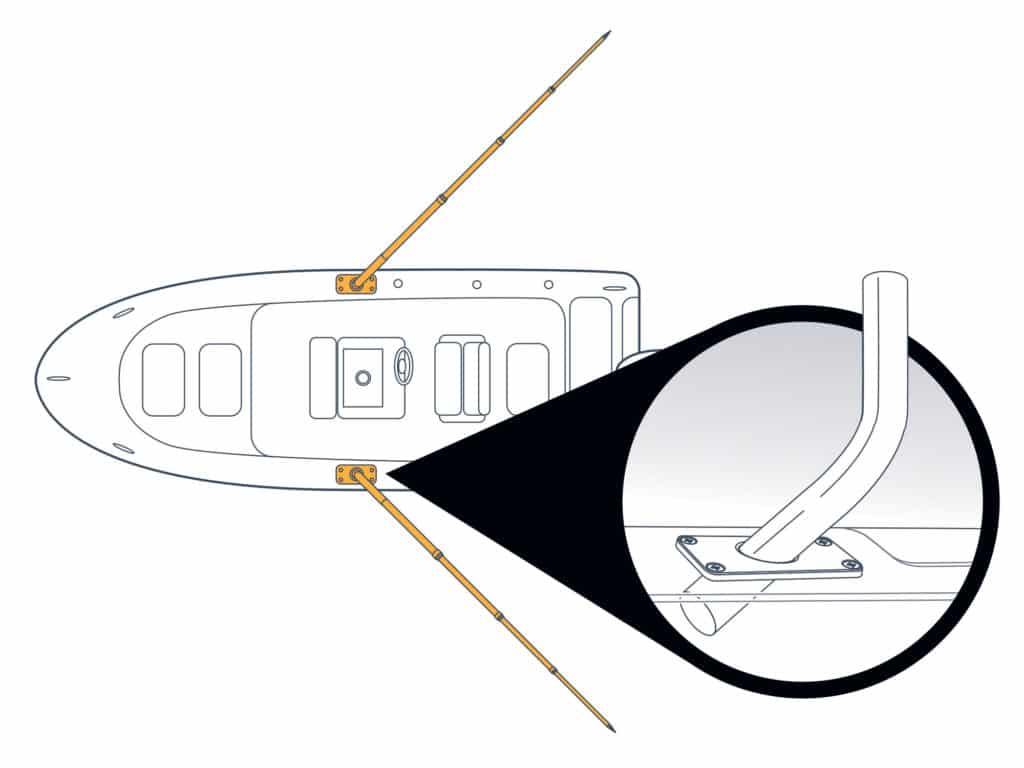
GUNWALE-MOUNT

HARDTOP-MOUNT
MATERIAL WORLD
Polished or anodized aluminum dominated the outrigger market for years and still are popular, but once the pole length exceeds 18 feet, the gauge or thickness of the metal has to be heavy enough to handle the added stress, -adding to the overall weight. Longer outriggers on -sport-fishermen also employ struts and cabling to stiffen the longer poles and maximize strength and stability with minimal increase in weight. In contrast, fixed-length -outriggers on outboard boats typically don’t extend past the transom, so struts aren’t necessary. Improved designs and advanced materials boost choices with telescoping poles and carbon-fiber construction.
“What we have found generally is everyone wants to go longer, but aluminum is too flimsy. If you go an extra 5 feet, the torque increases -exponentially,” Bridgewater explains. “Carbon fiber is much stronger and more rigid. A 26-foot pole weighs less than 6 pounds, can handle the torque of heavy dredges and stows easily. So the major advantage of using it is the ability to go longer and lighter. The only limits are the designs of the existing mounts.”
All four major outrigger manufacturers now build telescoping sets with carbon fiber. As more composites are developed, even stronger and lighter options will surely follow. That will further increase spread capability to boost catch rates while reducing overall boat weight, improving speed and range in the process.
| BRAND | LENGTHS | FIXED | TELESCOPING | ALUMINUM | CARBON FIBER |
|---|---|---|---|---|---|
| Gem gemlux.com | 16 to 26 ft. | No | Yes | N/A | Yes |
| Lee leetackle.com | 16 to 20 ft. | Yes | Yes | Yes | Yes |
| Rupp ruppmarine.com | 15 and 18 ft. | Yes | Yes | Yes | Yes |
| Taco tacomarine.com | 15 and 18 ft. | No | Yes | Yes | Yes |
RIGGER MAINTENANCE
No matter the style, outriggers, like all parts exposed to salt spray, require routine cleaning and maintenance. Rinsing with fresh water after every trip is crucial, and so is protecting against the elements. The typical dark finishes of carbon fiber absorb UV light, so barrier wax should protect them. Anodized aluminum pits if salt deposits are not removed, but besides habitual rinsing, owners should consider a good metal wax for added protection.
BEFORE YOU BUY
“Like anything else on a boat, I recommend buying the best outrigger set you can afford,” Asher says. “Check the warranty, the availability of replacement parts, and whether you can talk to someone about a problem if there’s no local dealer. Also, make sure the components can be easily removed and stored. You may pay more upfront, but it’ll be worth it in the end.”

